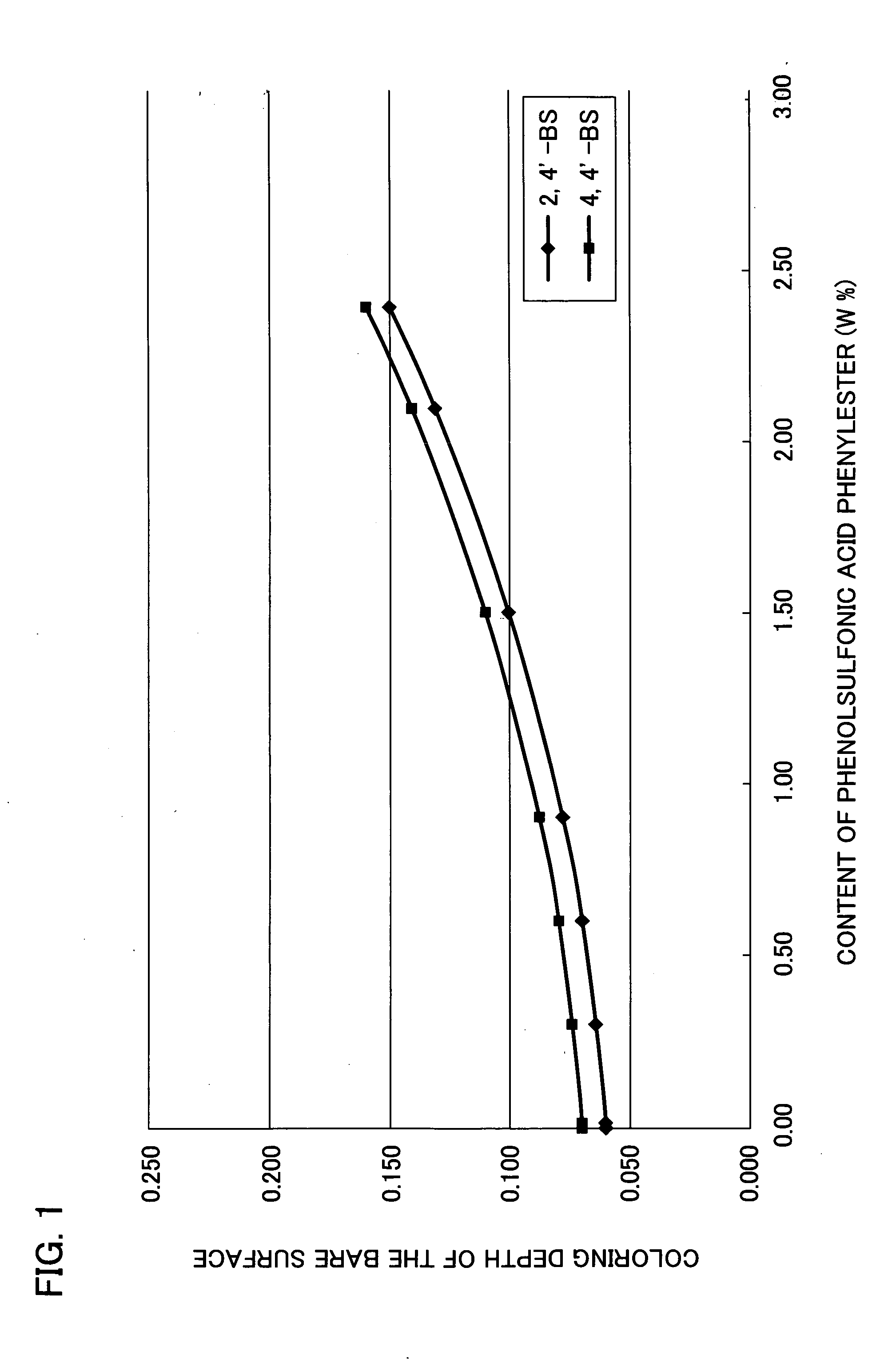Color developer and thermal recording material containing the same
a technology which is applied in the field of color developer and thermal recording material containing the same, can solve the problems of poor color sensitivity, insufficient and superior preservation stability of colored image and background, so as to achieve superior preservation stability, and less surface texture fogging
- Summary
- Abstract
- Description
- Claims
- Application Information
AI Technical Summary
Benefits of technology
Problems solved by technology
Method used
Image
Examples
example 1
[0063] Firstly, a mixture of-4,4′-dihydroxydiphenyl sulfone and 2,4′-dihydroxydiphenyl sulfone was prepared through the following method. 197 g of 1,2-dichlorobenzene and 141.1 g of phenol (1.5 moles) were placed in a reactor, and then were stirred and mixed with 60.0 g (0.6 mole) of 98% sulfuric acid, which was dropped in the reactor. When all of the sulfuric acid was dropped in the reactor, the reactor was heated-up. This caused reaction, and when the contents were brought to a boil at around 148° C., water was distilled (reaction product water) with the 1,2dichlorobenzene. Then, the distillate was condensed by a condenser, and was divided into two phases by a trap. The phase of 1,2-dichlor0benzene, the lower phase of the two phases, was continuously placed back to the reactor (in the reaction system). After 6 hours since the water production first occurred, the temperature of the reaction product (contents) reached 180° C., and the water production stopped. The upper phase (water...
example 2
[0076] The same processes for producing a thermal recording paper as those of Example 1, except for the use of a developer made of the foregoing crystal of 4,4′-dihydroxydiphenyl sulfone (95 weight % pure) that was separated by filtration from the reaction liquid obtained in Example 1, were performed, and the resulting thermal recording paper was subjected to the foregoing test. Table 1 shows the results.
TABLE 1DYNAMIC COLORING TESTBACKGROUNDCOLORED IMAGEEXAMPLE 10.061.05COMPARATIVE0.161.05EXAMPLE 1EXAMPLE 20.071.00
[0077] It should be noted that the embodiments and concrete examples of implementation discussed in the foregoing detailed explanation serve solely to illustrate the technical details of the present invention, which should not be narrowly interpreted within the limits of such embodiments and concrete examples, but rather may be applied in many variations within the spirit of the present invention, provided such variations do not exceed the scope of the patent claims set...
PUM
| Property | Measurement | Unit |
|---|---|---|
| weight ratio | aaaaa | aaaaa |
| weight ratio | aaaaa | aaaaa |
| melting point | aaaaa | aaaaa |
Abstract
Description
Claims
Application Information
 Login to View More
Login to View More - R&D
- Intellectual Property
- Life Sciences
- Materials
- Tech Scout
- Unparalleled Data Quality
- Higher Quality Content
- 60% Fewer Hallucinations
Browse by: Latest US Patents, China's latest patents, Technical Efficacy Thesaurus, Application Domain, Technology Topic, Popular Technical Reports.
© 2025 PatSnap. All rights reserved.Legal|Privacy policy|Modern Slavery Act Transparency Statement|Sitemap|About US| Contact US: help@patsnap.com

